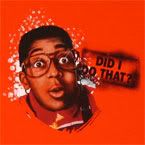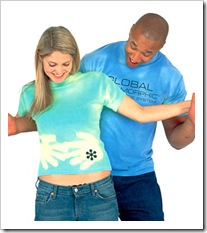Seinfeld
Seinfeld was a whole world unto itself, so it was no surprise that it spawned innumerable quotable lines. Famous for its self-proclaimed status as a show about nothing, the series frequently took the most minuscule and mundane of daily experiences and turned it into a half-hour of quirky entertainment. Though Seinfeld's memorable lines are numerous, there were two in particular that wormed their way onto everyone's lips.
No Soup for You!
The tyrannical Soup Nazi, based on an actual immigrant soup chef in New York City, was famous for arbitrarily admonishing customers and denying them the coveted opportunity to purchase his delicious soups. One minor misstep in soup-line courtesy could lead the dreaded excommunication, demarcated by the chef bellowing, "No soup for you!" and subsequent refusal to sell to the patron. Both his trademark phrase and his alleged title of Soup Nazi crept into our vocabularies, though you can bet the 251st time you heard some shmoe exclaim, "No soup for you!" it had long since lost its humor.
Yada, Yada, Yada
In the eponymous episode ("The Yada Yada"), George is a smidgen concerned over his current girlfriend's overuse of the filler phrase, "yada, yada, yada." While admittedly brief and concise, he's forced to wonder what heinousness she may be glossing over. In an instant, this phrase skyrocketed in popularity, both for its Seinfeld fame and its forgiving nature to unscrupulous details.
Friends
Friends was a veritable 90s empire, both in its longevity and sustained popularity. While all of the characters had their quirks and habits, perhaps none was more memorable than lovable simpleton Joey's trademark pick-up line:
How YOU doin'?
You have to admit, the phrase did prove pretty successful on the shoe, as Joey was typically quite the ladies' man. "How YOU doin'?" quickly spread to pick-up scenes everywhere, with a notably lower success rate for real life use. We can't all be Tribbianis.
Full House
Full House was fun for the whole family, with clean humor and an unblemished record of "cue-sappy-music-and-dad's-words-of-wisdom-speech" at each show's 25-minute mark. The show's characters were incredibly one-dimensional, allowing both awesome stereotyping and extreme repetition in behavior. In no time at all, many characters latched onto a trademark phrase that highlighted their unwaveringly constant personalities.
Have Mercy!
Though the above clip highlights a rare Danny Tanner version, the line was usually uttered by my longtime childhood crush, a one Uncle Jesse Kastopolis. The phrase generally expressed Jesse's inevitable good luck, in the first few seasons generally pertaining to his luck with the ladies. For the record, if given the opportunity I would agree in an instant to becoming a Jesse and the Rippers groupie. Have mercy.
How Rude! You got it, dude!
See how irritating that gets after just a few minutes of repetition? Now multiply that times every child tuned in to Full House every week. It's a frightening volume of catch-phrases. Yes, Stephanie and Michelle were adorable children, but good God did they they say those phrases a lot. I'll concede that it was pretty cute the first few times, though. That's just common sense.
Family Matters
Steve Urkel of Family Matters was the quintessential nerd, from his high water pants to his over-sized glasses. His distinctive nasal tone of voice was unmistakable. As he was famous for his klutziness and general zaniness, it's no doubt the show's writer branded him with a trademark catch phrase to absolve him of blame.
Did I Do That?

Find the audio here. ...I warned you.
Blossom
Joey Lawrence played Joey Russo, Blossom's slow-witted jock brother. While Joey may not have been particularly adept at schoolwork, he was skilled in extreme repetition of the word, "Whoa!" It really worked for him, considering he was relatively shocked and surprised at everything. Before you knew it, we were all whoa-ing right along with him. By the way, have you seen a recent photo of Joey? I'm pretty sure you have, considering he danced with the stars, but really, it's enough to make you say, well, whoa.
Woah!
Southpark
Southpark was not particularly revered for its subtlety. It's humor was more along the lines of crass and juvenile than nuanced and sophisticated. Co-creators Matt Parker and Trey Stone's juvenile humor is well-suited to their third grade subjects, though the level of appropriateness is probably a bit beyond elementary. In each episode of the first five or so seasons, major character Kenny McCormick was brutally killed in some unspeakable way. With each coming death, one of his friends would inevitably exclaim, "Oh my God! They killed Kenny! You bastards!" While the gag has since been largely abandoned, it was a predominant theme in early seasons. In typical cartoon fashion, by the time the next episode aired there was Kenny, alive and well without explanation.
Oh my God! They killed Kenny! You bastards!
The Simpsons
The Simpsons' cultural impact is so immense that they actually managed to impact the gold standard of language: the dictionary. That's right, the Oxford English Dictionary actually began including the phrase is its 2001 edition. Though originally billed simply as "annoyed grunt" in production scripts, voice actor Dan Castallanetta did his magic and left and lasting impact on our language.
D'Oh!
Homer isn't the only Simpson to infiltrate our language: son Bart has left quite the indentation himself. Bart's recognizable phrases are vast, though they were far more prevalent in early seasons. Here's a light smattering of these once-delightful but now decidedly overused Bart-isms:
Don't Have a Cow, Man!

¡Ay, caramba!
Cowabunga

Eat my Shorts

Dinosaurs:
Baby Dinosaur was right, you know. Who doesn't love babies? Especially baby dinosaur puppets? You'd have to have a heart of steel to not aww just ever so slightly at his misshapen-headed appearance. Baby was rather lovable, and sought to remind us of it at every turn. My all time favorite incarnation of Baby's catch phrase is in his inexplicably entertaining music video:
I'm the baby, gotta love me!
Who Wants to Be a Millionaire:
Who doesn't love a good dose of suspense? I certainly imagine Regis Philbin and the producers of Who Wants to be a Millionaire? were pretty partial to it. Hence all of the hemming and hawing and dun-dun-dun music. It's all enough stress to give you a heart attack, even if you're just playing along at home. Perhaps the most suspenseful moment was in Regis's poker-faced delivery of, "Is that your final answer?" The question was enough to make even the most confident of contestants hesitant to commit. The show's immense popularity meant this phrase was everywhere, from coffee mugs to t-shirts, leaving most of us wishing that he'd just let the contestant decide for himself already.
Is that your final answer?
Naturally this list is far from complete, but it does represent some of the most overused and over-repeated television catch phrases of the 1990s. While now it is safe to reminsce on them from a safe chronological distance, at the time the casual insertion of these phrases into everyday conversation led to inevitable moans and groans. Remember folks, don't try this at home. Just because it's funny when someone making a million dollars per episode says it does not guarantee it will have a similar effect coming out of your mouth. Don't say I didn't warn you.










